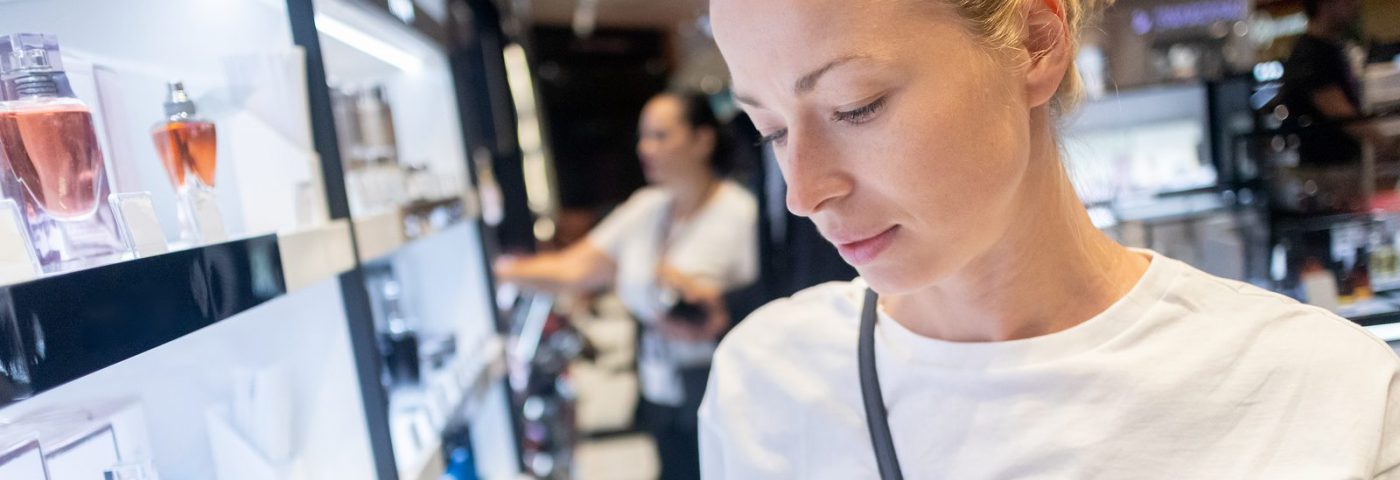As shopping habits continue to evolve, so does the beauty distribution landscape. Though store-based shopping remains predominant, the rise of internet retailing has impacted the beauty industry, becoming the fastest-growing channel for beauty and personal care sales over the past five years. In an abstract from her upcoming in-cosmetics North America presentation, Kayla Villena, Senior Beauty Analyst at Euromonitor, provides insight on where consumers are shopping for Wellness and sustainability drive North American beauty and personal care
The global beauty and personal care industry reached USD488 billion last year, having grown 6% in 2018. North America beauty and personal care sales reached USD 98 billion in the same year, having grown 4%. Much of the growth in North America, which represents 20% of the world market and is the third-largest region in the industry, is fuelled by wellness, sustainability and the relatively newly coined term, “clean beauty”.
Although these concepts are by no means new ideas to the North American marketplace, they are permeating particular categories to a greater extent than others, resulting in a shift to “cleaner” formulations. Product categories experiencing the highest growth in North America were those whose public perception and positioning were closely aligned with a holistic idea of wellness and self-care, such as skincare, bath and shower, and haircare, all of which grew 8%, 3%, and 3%, respectively, in 2018.
Retailers incorporate simplicity and clean beauty in private label brands
One area retailers are adapting to changing consumer values towards wellness and sustainability is through their private label beauty and personal care brands. Globally, private label makes up 2.7% of total beauty and personal care sales in 2018. In North America, private label’s share is 3.7%, having a higher share in the US (3.9%) than in Canada (1.6%) in 2018.
The growth of private label beauty and personal care in North America is fueled by two micro-trends: simplicity and clean beauty. On one hand, consumers are looking for no-frills products that are competitively priced, such as discount grocery chain Aldi’s skincare line, Lacura, and Dollar General’s colour cosmetics line, Believe Beauty, whose products range from USD 2.50 to USD 5 per SKU.
On the other hand, increasing consumer concerns about ingredient safety and health effects are driving momentum for clean beauty. “Free from” claims for sulfates, parabens, phthalates, mineral oil, fragrance, etc., are no longer solely associated with premium or cult-following brands. They can be found in mass price points among Amazon’s Belei skincare line and Walmart’s Earth to Skin, both of which contain no parabens, phthalates, or sulfates.
Clean beauty is also driving reformulations among private label brands, specifically CVS Pharmacy and Walgreens Boots Alliance’ announcements to remove oxybenzone from CVS-brand sunscreens below SPF50 and Walgreens sunscreens, respectively, over the next year. The announcement is a response to scheduled regulatory requirements in Hawaii and Florida that ban the sale of sunscreens in those markets containing the two chemicals associated with coral reef damage. It is expected that other private label brands will change formulations, but strategies vary among brands to change formulations in all states, rather than in a few, to ease logistics and promote uniformity.
The opportunity to expand private label brands that are both, or either simple and clean is greatest in skincare. In fact, private label penetration is highest in skincare globally than all other categories. Private label skincare grew 3.2% globally in 2018, higher than 2.7% growth in the US and in North America and 1.2% growth in Canada. Opportunities in private label skincare include developing basic skincare products that consumers can add to their beauty routines, such as a first or last step product that can be priced more competitively than a serum or a treatment that is more likely to include ingredient formulations at higher prices.
Communicating company values to consumers through product variety and initiatives will be expected from beauty and personal care retailers
As healthy living and wellness become an overarching lens that dictates how North Americans consume and live in their daily lives, companies and brands have responded with wider product variety and more assertive environmental and health stances that promote these trends. Similarly, beauty and personal care retailers have also witnessed the fast growth around the promotion of wellness and sustainability and will continue to provide consumer experiences that align and support these trends.
Kayla Villena, Senior Beauty Analyst, Euromonitor will lead a session at in-cosmetic North America on ‘Where do consumers shop for beauty?’ on Wednesday 23 October at 10:45 in the Marketing Trends Theatre.
For more information on the in-cosmetics North America 2019 education programme, visit: https://northamerica.in-cosmetics.com/
To preregister to receive the presentation visit “Where Do Consumers Shop For Beauty?”

